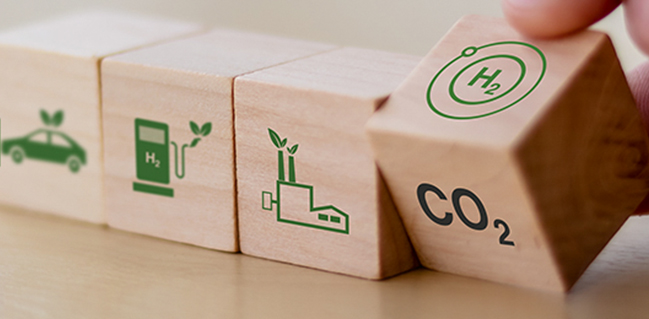Both hydrogen and electricity have significant roles to play in the future of energy and transportation, depending on the particular application and context. However, this is a complicated and dynamic subject.
Hydrogen Technology vs. Electric Technology
Hydrogen and electric technologies each have their own advantages and applications, thus it is likely that the future of transportation will combine both of them.
Download – https://www.marketsandmarkets.com/industry-practice/RequestForm.asp
The following provides a thorough analysis and illustration of hydrogen and electric technologies, along with practical examples, applications, and advantages of each:
Hydrogen Technology:
Explanation: Utilizing hydrogen as a fuel source, usually in the form of combustion engines or fuel cells, is known as hydrogen technology. The only byproduct of hydrogen fuel cells’ process of mixing hydrogen with atmospheric oxygen to produce energy is water. The car’s motor is run by this electricity, which offers a hygienic and effective source of propulsion.
Real-world examples: Honda Clarity Fuel Cell, Hyundai Nexo, and Toyota Mirai.
Use cases: Applications requiring extended driving ranges and rapid refueling periods are ideally suited for hydrogen technology, which makes it perfect for several vehicle types such as heavy-duty buses, long-haul trucks, and other vehicles. It may also be useful in fields like mobile power solutions and distant locations where energy storage and off-grid power generation are essential.
Hydrogen Technology Benefits:
Zero Emissions: Zero tailpipe emissions are produced by hydrogen fuel cell vehicles, which helps to lower greenhouse gas emissions and improve air quality.
Fast Refueling: Users can refill a hydrogen vehicle with ease and familiarity because it takes about the same amount of time as a normal gasoline vehicle.
Long Driving Range: While electric vehicles sometimes cause range anxiety, hydrogen vehicles can attain lengthy driving ranges that are on par with conventional gasoline vehicles.
Electric Technology:
Explanation: Rechargeable batteries power electric vehicles (EVs), storing energy needed to move the car forward. Wireless charging technology or electric charging stations can be used to recharge the batteries.
Real-world examples: Nissan Leaf, Chevrolet Bolt EV, and Tesla Model S.
Use cases: Short- to medium-distance travel, urban commuting, and personal automobiles are good uses for electric technology. It is becoming more and more common in motorbikes, passenger cars, and other smaller vehicles used for municipal services and logistics.
Electric Technology Benefits:
Zero Emissions: In addition to significantly reducing air pollution and greenhouse gas emissions, electric vehicles have zero tailpipe emissions.
Energy Efficiency: When compared to internal combustion engines, electric motors are more efficient at transforming stored energy into actual vehicle motion.
Renewable Energy Integration: When used as energy storage devices, electric vehicles can use excess electricity from renewable sources and return it to the grid when needed, facilitating the integration of renewable energy sources.
Lower Operating Costs: When compared to vehicles with conventional internal combustion engines, electric vehicles often have lower operating expenses since they require less maintenance and use less energy.
While electric technology is suitable for personal automobiles, urban commuting, and the integration of renewable energy sources, hydrogen technology is well suited for applications requiring extensive driving ranges and rapid refueling periods. The decision between hydrogen and electric power is influenced by market demand, infrastructural accessibility, and particular use cases. In order to meet a variety of needs and achieve sustainable mobility objectives, a combination of both hydrogen and electric technologies will probably be used as the transportation industry develops.
Hydrogen Potential – Revolutionizing Transportation:
Hydrogen Fuel Cell Vehicles (FCVs):
Vehicles with internal combustion engines can be replaced with hydrogen fuel cell vehicles, which have zero emissions. They run the vehicle’s electric motor on hydrogen, which is used as fuel and reacts chemically with oxygen to produce energy. FCVs are environmentally beneficial because the only byproduct is water vapor.
Compared to battery-electric vehicles, fuel cell vehicles (FCVs) provide the advantages of greater driving range and quicker refueling periods. This makes hydrogen a practical choice for long-distance driving and heavy-duty applications by addressing the range anxiety and protracted recharge times frequently associated with electric vehicles.
It is anticipated that the cost of fuel cell systems and hydrogen infrastructure will decline with the advancement of technology and the realization of economies of scale, making FCVs more affordable for consumers.
Sustainable Aviation:
A sustainable aircraft fuel option being investigated by the aviation industry is hydrogen. A method to lower carbon emissions and the aviation industry’s reliance on fossil fuels is to use hydrogen to power aircraft through fuel cells or combustion engines.
Since hydrogen combustion creates noise levels lower than standard jet engines, aircraft powered by hydrogen has the potential to significantly reduce noise pollution. Along with making air travel quieter and more environmentally friendly, this could help the communities that surround airports.
Shipping and Maritime Applications:
Hydrogen has potential in the decarbonization of the maritime sector, a major contributor to worldwide emissions. In order to lower greenhouse gas emissions and marine pollution, conventional fossil fuel engines in ships can be replaced with hydrogen fuel cells or hydrogen-powered internal combustion engines.
Hydrogen finds application in port operations, including but not limited to forklifts, cargo handling machinery, and auxiliary power systems on ships. Ports may lower their carbon footprint and help to create cleaner, more sustainable port operations by switching to hydrogen-powered equipment.
Energy Storage and Grid Balancing:
In energy storage and grid balancing, hydrogen can be extremely important. Through an electrolysis process, hydrogen can be produced from surplus electricity produced by renewable sources. In order to facilitate the integration of renewable energy sources into the grid and provide a steady and dependable supply of energy, the stored hydrogen can subsequently be transformed back into electricity via the use of fuel cells.
Because renewable energy sources are erratic, hydrogen can serve as a buffer during times when their production is low. The increased use of renewable energy sources and a decrease in the dependency on fossil fuels are encouraged by this flexibility, which makes the energy system more efficient and well-balanced.
All things considered, hydrogen has the potential to completely transform the transportation industry by offering zero-emission fuel alternatives for a variety of vehicles, including automobiles, airplanes, ships, and port operations. Hydrogen is positioned as a major actor in the future of sustainable transportation, helping to create cleaner air, lower carbon emissions, and a more sustainable energy system because to its benefits in terms of longer ranges, speedier refilling, and energy storage capacities.
Read More – https://www.marketsandmarkets.com/industry-practice/hydrogen/hydrogen-future-electric





